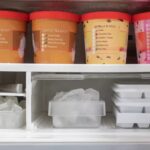When it comes to to-go food containers, recycling possibilities vary depending on their composition, local recycling regulations, and contamination levels. Understanding the recyclability of different materials can help make informed choices about disposal methods.
Chinese Food Containers
Chinese food takeout containers, commonly known as oyster pails, pose challenges for recycling due to their paperboard base coated with plastic, typically polyethylene. While some municipalities accept these containers if they’re clean and free of food waste, they often end up in landfills due to recycling limitations.
Plastic Takeout Containers
Plastic takeout containers, frequently used for salads and entrees, are typically made from low-density polyethylene or polypropylene thermoplastics. These materials are recyclable in most household recycling programs, provided they are rinsed and free of food residues to prevent interference with recycling machinery.

Styrofoam Containers and Cups
Despite their widespread use, expanded polystyrene (EPS) foam containers, often referred to as styrofoam, are not easily recyclable due to their petroleum-based composition. EPS containers pose environmental risks during production and disposal, making them unsuitable for most recycling programs.
Paper Containers and Wrappers
Paper containers and wrappers can be recycled if they are clean and free of food contamination. Municipal recycling programs typically accept paper materials that have not come into direct contact with food.
Cardboard Food Containers
Cardboard food containers are recyclable, provided they are not contaminated with food waste such as grease. However, cardboard containers with a waxy or plastic coating, often used for pre-made meals, are challenging to recycle and may require specialized recycling programs.
Waxed Paper Cups
Paper cups with a waxy coating, commonly used in cafes, are not recyclable due to difficulties in separating the materials during recycling. While some cups may be compostable if made from polylactic acid (PLA), reusable alternatives are more eco-friendly.

Ice Cream Cartons
Ice cream cartons, typically made from paperboard with a plastic polyethylene lining, are recyclable in some regions but not universally accepted due to the challenges posed by the plastic coating. Check local recycling guidelines for disposal options.
Juice Boxes
Juice boxes, composed of multiple materials including paper, polyethylene plastic, and aluminum, are difficult to recycle due to their layered construction. Most juice boxes end up in landfills unless specific recycling programs are available.

Foil Containers
Foil food containers made from aluminum are widely accepted in curbside recycling programs. Ensure they are rinsed and free of excess food waste to prevent contamination during recycling.
Composting Takeout Containers
Compostable takeout packaging made from paper or cardboard can be composted if free of contaminants. Look for compostable labels or symbols to determine suitability for composting, noting that commercial composting facilities may be required for some materials.

Conclusion
Navigating the recyclability of to-go food containers involves understanding the materials they are made from, local recycling regulations, and proper disposal methods. While some materials like plastic and aluminum are widely recyclable, others such as styrofoam and waxed paper present challenges for recycling. By making informed choices and prioritizing reusable and compostable alternatives, individuals can contribute to reducing waste and promoting sustainable practices in food packaging disposal.


















